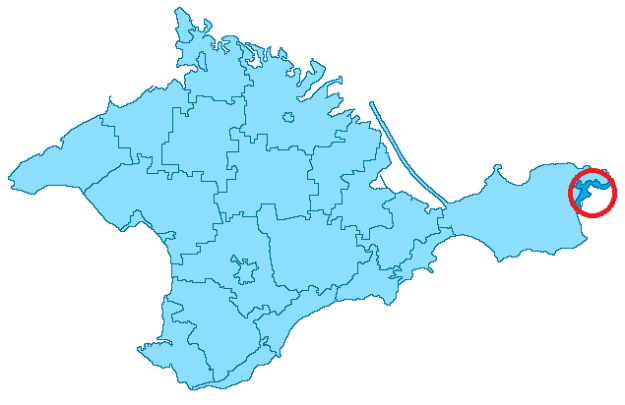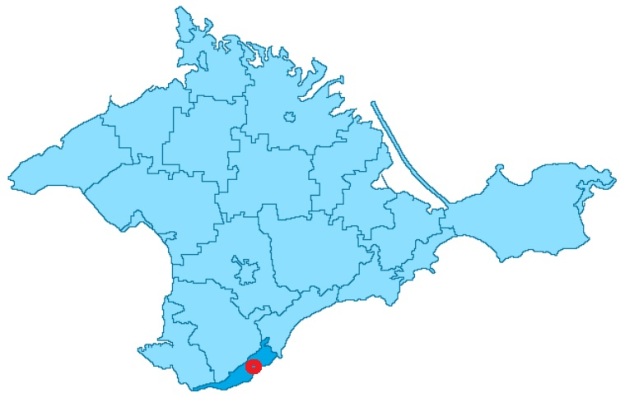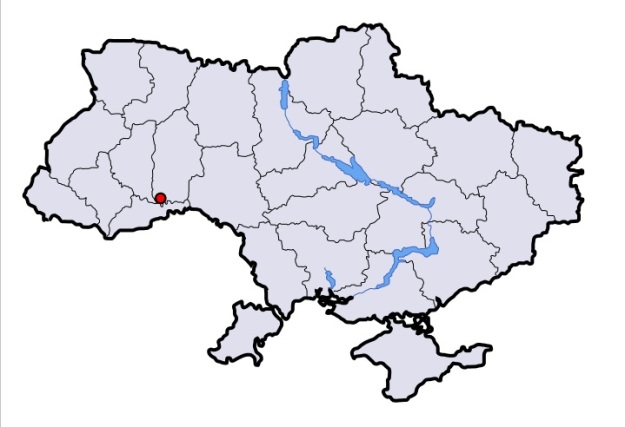This is a pop up bubble post, which means that it will be gradually updated based on a new content.
Armenian community belongs to the ones which were present in the territory of modern day Ukraine for more than 1000 years. Armenians have not only played an important role in formation of Ukrainian nation but also developed its own unique traditions, culture and even its own dialect slightly different from both Eastern and Western Armenian dialects.
It is known from different sources that in Middle Ages Crimean peninsula (the city of Kefe (Kafa, Feodosia)) was called Armenia Maritima (Sea Armenia) and Azov Sea was called Lacus Armeniacus. The population of some Crimean cities in the past was mainly Armenian. Single city of Kefe (Kaffa or Feodosia) had 30 Armenian churches in the past, 8 of them are preserved until now. Another source (Maksoudian. “Armenian Communities”, p. 53) states that “According to Genoese sources, in 1316, Armenians had three churches, two Armenian Apostolic and one Catholic, of their own in Kaffa”. According to Philip D. Curtin’s Cross-Cultural Trade in World History, p. 186.: “The Armenian Church played a central role in Armenian social life and counted 44 churches under its jurisdiction in 1330. From the 14th to 18th centuries, the Armenians formed the second largest ethnic group after the Tatars. Many of them began to speak Tatar as their home language, writing it in Armenian script.”
The Oldest part of Lviv (Lemberg) consisted of Armenian, Rusyn (Ruthenian) and Jewish districts. There is even one town in Crimea called Armyansk which used to have a name Ermeni Bazar (Armenian Market) and one village called Haykavan. Unfortunately, similarly to many different regions, Armenians of Crimea also experienced times of troubles, deportation and establishment of a new life in exile. As a result of all of this the Southern part of Russian Federation near Rostov on Don has a significant Armenian population and many villages and towns carry names similar or identical to the places of their former mother land in Crimea.
During all of this time, Armenians living in the territory of Ukraine, were not the same and played different role in society. First Armenian settlements appeared in Crimea as a response of constant wars and problems between Ancient Armenian Kingdom and its old and new neighbors. At this time whole Southern Ukraine was relatively safe region with quite rich cities mostly governed by Sea Republic of Genoa. When Ottoman empire and then Crimean Khanate took over the power in this region, the overall freedom and trade prosperity were preserved in this very international region. Jews, Muslims, Christians and Karaites lived together behind city walls sharing everything between each other. Until today almost every Crimean city has Synagogue, Kenassa, Mosque and Church in just few hundreds meters from each other.
Later on during Ottoman Expansion to the Northern part of Ukraine or during times of troubles Armenians migrated also to the main cities of another country present at that days on the territory of Ukraine, Grand Duchy of Lithuania. At the same time both communities had very little connection and developed its own unique features.
Languages of Armenians in Ukraine
Unique features of Armenian community include also two different languages developed and used for hundreds of years on the territory of modern day Ukraine. One is a dialect of Western Armenian language similar to the language used in the region of ancient city Ani. Today it is called as Nor-Nakhichevan dialect and used mostly in the region around Rostov on Don in Russia. Another one is a dialect of Kypchak language which once was a lingua-frank in whole territory of modern day Southern Ukraine.

Armenian dialects of ‘classical’ Armenia at the beginning of 20th century by Hrachia Adjarian, 1909.
It is interesting to notice that Armenians who moved from Crimea to Western regions of modern day Ukraine before 18th century spoke Kypchak-Armenian language while Armenians deported from Crimea to Southern Russia in 18th century (1778) were Nor-Nakhichevan Armenian language speakers. This fact could mean that either more educated Armenians who emigrated to modern-day Western Ukraine as traders and commercials were Kypchak speakers while average Crimean Armenians were Nor-Nachichevan speakers or that before Armenian deportation in 18th century there was a second massive wave of Armenian immigration to Crimea which also influenced the language spoken by Armenians in Crimea.
Nor-Nackichevan Armenian LanguageThe main wave of Armenian settlements during Middle Ages was from Ani, the former capital of Armenian Kingdom and from Armenian settlements around southern coast of Black Sea (Trabson, Amshen, Baberda, Sper). After living hundreds of years in Crimea original Ani language took many words from other Crimean languages, mostly from Kypchak language and evolved into Nor-Nakhichevan Armenian dialect. Compared to Eastern Armenian, this language has very little Iranian and significant Kypchak substrate. After 200 years since Crimean Armenian have been deported by Russian Empire from Crimea to the region around Rostov on Don in Russia (in 1778) Nor-Nakhichevan language includes now significant amount of Russian words.
Kypchak-Armenian Language of Armenian Community from Southern and Western Ukraine
Armenian Community living with Tatar (Kypchak) speaking majority also developed its own Kypchak-Armenian language (based on the language of Kipchak-Turks, not to be confused with Turkish Armenian language once used on the territory of modern day Turkey) which eventually developed from language of daily life communication into the language with its own written form based on Armenian script. This language was widely used in Armenian Communities in Lviv, Kamyanetk-Podolskyi, Lutsk, Mohyliv-Podolskyi, Bilgorod-Dnistrovkyi, Syret (Romania), Suceava (Romania), Iassy (Romania), Zamosc (Poland), Numerous documents and even Bible along with other religious texts were written in this form of Kypchak-Armenian language (more about it here, here, p.52). It is important to notice that the first book in Kypchak-Armenian was printed in Lviv (Lemberg, Lwow) in 1618 by Ovannes Karmadanents. This book was the first ever book printed in a language which belongs to Turkish Kypchak group. Today the manuscripts written in Kypchak-Armenian can be found in many countries.
Here is the list of texts/books (overall 109 manuscripts between 1519-1689, ) in Kypchak-Armenian in Armenia, Austria, France, Italy, Netherlands, Poland, Romania, Russia, Ukraine. More about it and can be found here; it also includes: 3 chronicles, 5 Psalters, all Letters of apostle Paul, 9 Prayer books, 2 hagiography collections, 3 Codes of laws, 3 Remedial codes, numerous compositions on theosophy, didactics, histories of religion and church, cosmologies, astrologies, selections, chemistry, medicine, calendars, documents of self-government Kypchak speaking Armenians of Kamenets-Podolsk, Lviv, Ivano-Frankivsk (Stanislav), samples of Armenian-Kypchak dictionaries and glossaries of 16-17 centuries.
Armenian communities by regions
Armenian Community of Southern Ukraine
Aq Mescit (Simferopol), Crimean Republic
Aq Yar (Sevastopol), Crimea
After Armenian and Greek deportation from Crimea at the end of 18th century Armenian were not allowed to return and to resettle in Sevastopol until the end of 19th century. Consequently the very first Armenian church of St. Anna was built only in 1908 (November 16th). The name of this church was dedicated to the person who donated money for the construction of it — Anna K. Avdeyeva. It is known from the local archive that there was also Armenian school next to the church and there were 567 Armeno-Gregorians and 3839 Armeno- and Rome-Catholics in 1911. In 1913 there were 1415 Armenians in Sevastopol. In February 25th, 1930 the remains of Armenian community requested local authorities to shut down the church and to give the building for other social needs (more about it can be found here).
Bakhchisarai, Crimean Republic
Church of the Holy Mother of God (Church of Saint Astvatsatsin, Սուրբ Ասսուածածին Եկեղեցի).
The stone taken from another Armenian Church of St. Gregory Illuminator tells us: “Saint Cross in memory of Djanibeck at the gates of St. Gregor Lusavoritsh church. Year 1683.”
Yalta, Crimean Republic:
The panoramic view of Surb Hrepsime Church in Yalta and the grave of architect Surenyants can be found at: http://www.virtualcrimea.ru
Kefe (Feodosia, Kaffa, Թեոդոսիա, Θεοδoσία), Crimean Republic:
Esqi Kyrym (Eski Kermen, Solkhat, Staryi Krym), Crimean Republic:
Surb Khatch Monastery and Surb Nshan church, Eski Kyrym.
Surb Stephanos Monastery (Սուրբ Ստեփանոս վանք), Eski Kyrym.
Surb Astvatsatsin (Սուրբ Աստվածածին եկեղեցի, St. Mary’s) church (destroyed)
Estimated date of construction: between 1375 and 1410. In 1685 it was described as significantly destroyed. Then it was reconstructed once after 1685 and then in 1731, 1799 and at the beginning of 19th century. Archeologist G.M. Spasskiy in 19th century describes its interior in the following way: “Над алтарем было изображение Святого Георгия – просветителя Армении в несколько особом виде, а на правой – Святого Николая. Каменные ступени церковной паперти ведут на церковные хоры и кровлю, где видна надпись над головой Иоанна Великого. Все остальное прочитать просто невозможно”. In 1921 it was converted into Orthodox Christianity. It was completely destroyed by Soviet regime in 1958.
- Church Surb Astvavatsytsyn in Eski Kyrym (Staryi Krym), Crimea, Ukraine
Toply (Topolivka, Topolevka), Crimean Republic:
Remains of two Armenian churches: Surb Sargis (in the village) and Surb Urpat (on the south-eastern suburbs of Toply), Surb Urpat was renovated in 1702. According to Russian sources, there were 212 Armenians deported Toply in 1778.
Bağça Eli (Bagate, Bogatoe), Crimean Republic:
Armenian church Surb Prkich, 14th century. Possibly there was a St. Elijah monastery in 18th century nearby:
Sudaq (Soldaia)
Kezlev (Yevpatoriya, Եվպատորիա, Gözleve), Crimea, Ukraine
More information about Surb Nikohayos can be found on the following video (in Russian):
Kerch (Keriç, Кърчевъ, Παντικάπαιον)

Kerch, Crimea, Ukraine, photo is taken from http://www.wikipedia.org
Armenian Church of the Holy Archangels in Kerch was built in 1857. In 1927, after establishment of USSR, regular cervices and church were shut down and it served as a boarding-school. Then it was reopened for services one again after Ukraine gained independence. Another interesting fact depicting Armenian presence in Kech is that the city is surrounded by the mount called Ararat (location on ww.wikimapia.org is here)
Bilgorod Dnistrovskyi (Akkerman, Ophiusa, Tyras, Album Castrum, Cetatea Albă, Asperon, Leukopolis, Montecastro), Odessa oblast:
Odessa (Hacıbey, אָד́עסא)

Odessa (Hacıbey) and Odessa oblast, Ukraine
Church Surb Grigor Lusavorich (Սուրբ Գրիգոր Լուսավորիչ եկեղեցի):
Armenian Community of Northern Ukraine
Northern Armenian Community existed for hundreds of years along with Slavic (Polish, Ukrainian) and Jewish communities. The interesting thing which is noticeable in this community is that the family names do not have typical Armenian “-yan” ending but actually typical Slavic “-skyi” and “-ytsch”.
Lviv oblast
Lviv (Lwów, Lemberg, Leopolis, לעמבעריק):
Lviv used to have a very important and quite big Armenian community with many churches starting from the very first years after foundation of Lviv. Among them there are Surb Khach (completed in 1629 with donations form Isak Agopsovitch, Zamastrynivska str) which was converted into prison after all Armenian churches but main cathedral were annexed by Austrian government in 1794.
St. Jacob (Jatsek) church (originally made of wood and then completed in 15th century by Philip and Bernard Bernativitch) and St. Anna church (originally made of wood and then completed in 1363) were also destroyed in 1794 by Austrian government.
Ternopil Oblast
Berezhany
Armenian community of Berezhany traces back to 17th century. It was mentioned for the first time in 1686 and reflected muss migration of Armenians from Podolia during Ottoman rule of this region in 1672-1699. Already in 17th century Amenians had its own wooden church which then was rebuilt into the Church of the Immaculate Conception of the Blessed Virgin Mary in 1764. When the city was moved under Austrian rule as in other cities of Western Ukraine local Armenian community experienced massive decline. In 1806 the Church was finally closed. Only in 1826 due to financial support of Armenians from Lviv the Church was returned back to the community and started services once again. This time the community existed until the town was taken by USSR. This time the church was closed in 1946 and the priest was taken into prison for 15 years. Since then it was never reopened and community finally disappeared. Nevertheless the town still has its own “Armenian” historical district and Armenian street. The church is relatively well preserved.
Kamyanets-Podilskyi (Kamieniec Podolski, Կամիանեց-Պոդոլսկի ):
Ivano-Frankivsk (Stanislawow):

Ivano-Frankivsk (Stanislawow), Ukraine
More about Armenian community in Ivano-Frankivsk as well as panoramic view of Armenian str. can be found here and here.
Modern Armenian Communities in Ukraine
Dnipropetrovsk
Local community of Dniproperovsk is about to complete construction of their own cathedral and cultural center:
- Armenian church and cultural center in Dnipropetrovsk, to be competed in 2013
Zaporizhzhya
Local Armenian Apostolic church is located here.
Kharkiv (Kharkov):

Kharkiv and Kharkiv oblast, Ukraine
First Armenian priest was appointed to Kharkiv in 1870. The very first prayer house was situated on Dmitriyevskaya str., 24. Then in 1902 it was moved to Instrumentalnyi Pereulok, 3 at the house of Mr. Richter a teacher of Kharkiv University. In 1910 the place of prayer house was moved once again to Chernyshevskaya srt. 5, the site owned by G. Davtyan. This place later on became St. Gregory church. Unfortunately this church was destroyed during Second World War.
New church was build only in 2004 on Shevchenko str., 144. In addition to it the building of Armenian Community Center is currently being constructed next to the church at the same site. Armenian Cultural Center offers Armenian language courses, history and classes of traditional Armenian dances.
Unfortunately both Northern and Southern communities are almost vanished in modern day Ukraine. Incredible events of 20th century from one side resulted in significant emigration and deportation of local Armenians from Ukraine, from another side recent events in Armenia lead thousands of people to leave Armenia and to move to Ukraine.
Due to this reason, most of modern day Armenians living in Ukraine speak Eastern Armenian language and follow traditions of modern day Armenia. Nevertheless, huge cultural heritage and little remains of Northern and Southern Ukrainian Armenian communities still exists. Once again, every big city in Ukraine has an active Armenian community with its own church. Many churches and even some monasteries are restored and returned to Armenian community. Community seems to be recovering after many years of oblivion. More about modern day Armenian Community of Crimea can be found in an interview with editor-in-chief of Ukrainian Armenian magazine “Masnya Aghavni” Vahan Vermishyan.
















